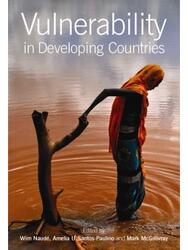Book
Vulnerability in Developing Countries
More than a billion people live in extreme poverty. Many face the risk of never escaping from poverty. These risks are exacerbated by natural hazards, ill-health, and macroeconomic volatility. Consequently, vulnerability has become the defining challenge of our times. Despite this there is a need to better understand vulnerability, particularly in developing countries where people do not have the same bulwarks against risks. This volume addresses this need by pulling together essays from leading scholars in the field. It focuses on critical dimensions of vulnerability in developing countries such as the relationship between poverty and vulnerability, and vulnerability arising from ill-health and external shocks. Reflecting the multi-dimensionality of vulnerability, it showcases a variety of methodologies, which offer new perspectives on the use and relevance of the notion of vulnerability in economic development.
 Join the network
Join the network